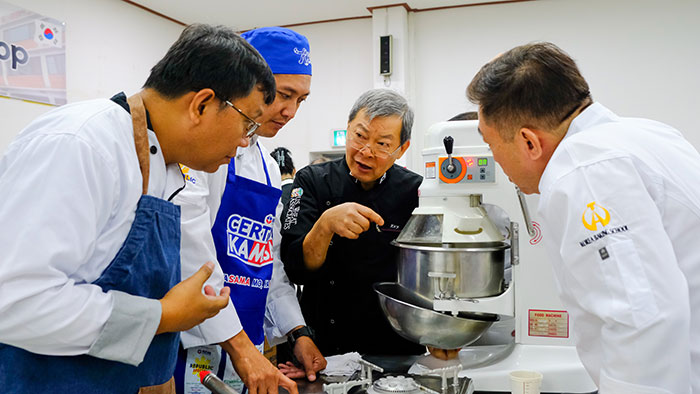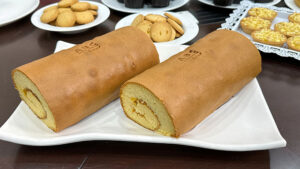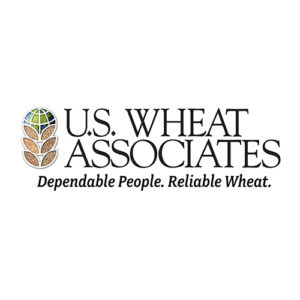Training, technical support builds demand for soft white wheat in Southeast Asia
This is the first in a series of articles describing how U.S. Wheat Associates (USW) is investing funds from the Washington Grain Commission assessment to maintain and grow demand for soft white (SW) and other classes of U.S. wheat in overseas markets. The partnership with the Washington Grain Commission, Oregon Wheat Commission, Idaho Wheat Commission, and 14
other state checkoff programs allows USW to apply for export market development funding from several U.S. Department of Agriculture Foreign Agricultural Service programs.
That partnership has been working since the 1950s, yet ongoing export promotion remains vitally important to Pacific Northwest (PNW) wheat growers. For example, an average of 55% of total annual SW production and carry-in stocks is exported, and the percentage for Washington-grown SW is closer to 80%. From such products as sponge cakes, cookies, and pastries to blending with other wheat classes, SW wheat flour has the versatility to improve the quality of a wide variety of products in the top SW export markets of Southeast and North Asia, as well as growing opportunity in Latin America.
In this article, the focus is on export promotion strategies and successful activities in Southeast Asian markets including Malaysia, Vietnam, Indonesia, and the Philippines where population and incomes are growing.
Ongoing education
“Helping managers understand quality and how to measure it is a big focus of our training activities,” said Joe Sowers, regional vice president, South and Southeast Asia. “Malaysia is a case in point.”

While exports to Malaysia have fluctuated in recent years, it remains an important market for U.S. wheat farmers because technical processes used by the country’s four flour mills influence other mills across Southeast Asia. The Malaysian market also has good growth potential because customers use imported wheat to produce flour, cookies, noodles, and other products for export. As a result, Malaysian mills welcome continuing technical education for their staff.
With these factors in mind, USW invited a Malaysian flour miller to his first USW-sponsored “Wheat Analyst Program” in April 2023 in Bangkok, Thailand. That event included 24 participants from 13 regional flour mills to produce local end products and compare the quality of U.S. wheat flour performance to local standards.
During the program, the Malaysian manager learned about U.S. western white (WW) wheat, a blend of SW and up to 20% of Washington-grown club wheat. In August 2023, the mill purchased 10,000 metric tons of U.S. WW as a trial sample that returned an estimated value of $2.8 million to PNW farmers and the grain chain.
Applying innovative analysis
One of the most effective tools USW uses to help regional millers and wheat food companies better understand the return on investment from SW wheat is Solvent Retention Capacity (SRC)
analysis. SRC is a much more accurate way to predict how flour will perform compared to a measurement of protein alone.
“Customers in Southeast Asia are now more conscious about flour character and the value of using SRC as a guide to buy flour for cakes, cookies, and crackers,” said USW’s long-time bakery consultant Roy Chung. “But frequent changes in production and research staff mean we continue to stress the importance of SRC profiling to get a better chance of penetrating deeper into markets like Vietnam.”
 USW technical service activities have created pullthrough demand from Vietnamese bakers for SW wheat, as well as for bread wheat, like hard red winter, also grown in the PNW. For example, a large snack company operating in Vietnam has very specific performance requirements for all flour purchases. A flour mill in Vietnam asked USW to help it apply its investment in SRC equipment to win a supply contract. Chung trained its employees, and the mill won business from the baking company.
USW technical service activities have created pullthrough demand from Vietnamese bakers for SW wheat, as well as for bread wheat, like hard red winter, also grown in the PNW. For example, a large snack company operating in Vietnam has very specific performance requirements for all flour purchases. A flour mill in Vietnam asked USW to help it apply its investment in SRC equipment to win a supply contract. Chung trained its employees, and the mill won business from the baking company.
Elastic demand
Creating additional future demand for SW wheat in Vietnam through such technical support is helping rebuild sales after a sharp cut back due to lower production and higher prices in marketing year 2021-22 (June to May). In that drought year, Vietnam cut SW imports by 60%. Yet sales of about 100,000 metric tons (3.67 million bushels) in 2022-23 and as of May 2 in 2023-24, are up about 38% as prices eased.
While the long-term demand outlook for SW in Southeast Asia remains strong, the region is subject to swings based on cost and competitive supplies. Indonesia is a good example. One of the world’s top wheat importers, Indonesia’s purchases have reached as much as 11 million metric tons. Millers competing on price there do create marketing challenges for highercost U.S. wheat. Yet Indonesian millers do value USW’s technical training and have a preference for SW to serve growing cake and snack flour demand. Commercial sales of SW to Indonesia through most of 2023-24 are 438,000 metric tons, a volume that is up 30% from the same time in 2022-23.
Helping grow customer profits
“We have identified several areas where USW can help wheat food processors expand their markets by introducing new products and production formulations in which U.S. wheat classes have an advantage,” said Sowers.
This strategy demonstrates that bakers have the power to demand flour products made with imported U.S. wheat and helps increase total wheat consumption. For example, since 2021, USW leveraged its regional technical expertise and Agricultural Trade Promotion funds to expose Philippine bakers to production methods and new products from South Korea.
USW has hosted several webinars featuring demonstrations of trendy Korean confectionary and bread products with USW Seoul Food/Bakery Technologist David Oh that have reached thousands of Philippine commercial bakers who tell USW they can apply the recipes in their business. USW has identified 12 Philippines bakery retailers that added products from the seminars made with U.S. SW and hard red spring (HRS) wheat flour.
USW technical staff serving the Philippines and South Korea also organized and held a comprehensive bakery workshop in Seoul for Filipino bakers. As a result of the workshop, four of the participants created a total of eight new bakery products made with SW and HRS flour that are still on sale.
“We intend to expand this effort to showcase products from the sophisticated North Asian baking industries in the Philippines and other countries in the region,” Sowers said.
This article originally appeared in the June 2024 issue of Wheat Life Magazine.

Steve Mercer
Steve Mercer is the vice president of communications for U.S. Wheat Associates, the export market development organization for the U.S. wheat industry. He is also a contributing author for Wheat Life Magazine.
